Did you know that Padmasana is also the foundation for a wide range of more advanced asanas? By mastering the basic posture and building on its solid foundation, yogis can unlock a world of possibilities for challenging and transformative practice.
In this article, we’ll explore some of the most exciting and challenging asanas built on the foundation of Padmasana. Whether you’re a seasoned yogi or a curious beginner, you’re sure to find something to inspire and challenge you in this exploration of Padmasana-based asanas.
What is Padmasana?
Lotus means Padma in Sanskrit. As one of the most recognizable and beloved yoga postures, Padmasana (Lotus Pose) has been a staple of yoga practice for centuries. Its iconic seated position, with the feet resting on opposite thighs, is not only a symbol of inner peace and tranquillity, but also a powerful tool for building strength, flexibility, and balance. It is the posture for meditation and Buddha is often depicted in it.
Before moving further, let’s see quickly how to practice Padmasana or Lotus Pose.
How to practice Padmasana or Lotus Pose?
- Sit on a yoga mat keeping your legs straight in front of you.
- Inhale, while exhaling, place your right foot on your left thigh, then Inhale.
- Now again while exhaling, place your left foot on your right thigh.
- If you find the above sequence difficult, you can try with the left foot first.
- The soles of your feet should be above the heels, and heels should be below the belly button.
- Keep your back straight.
- Place your hands on your knees making Dnyanamudra (Touch the nails of the index fingers with your thumb keeping the remaining three fingers straight.
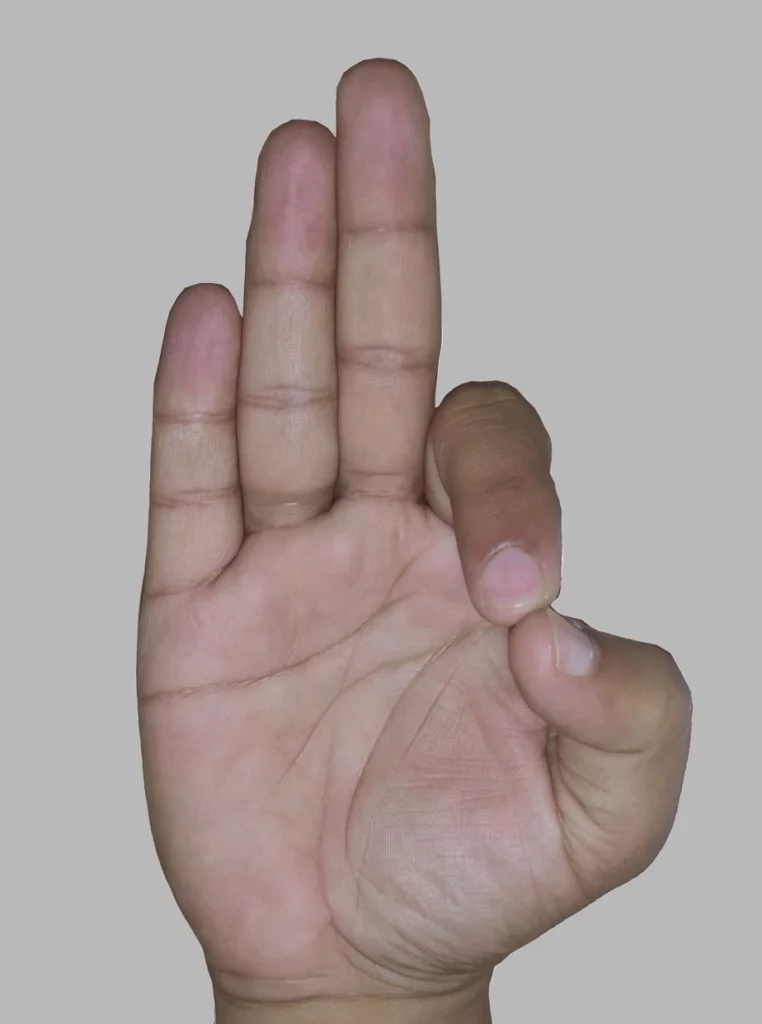
- Or you can place your left hand near the lower abdomen just above the genitals and your right hand above the left hand as shown in the image.
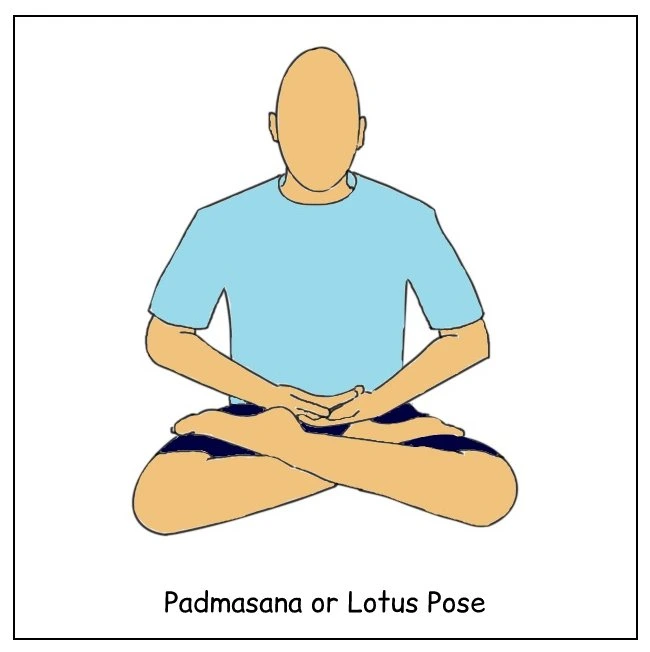
What are the Benefits of Padmasana?
- It is one of the best yoga postures for Meditation.
- It helps in improving concentration and also helps in mental healing.
- Helps in improving digestion, and sleep.
- Beneficial in Rheumatoid arthritis.
- It makes your skin glow.
- Helps you overcome the negative thoughts in your mind.
- Beneficial in weight loss.
- Improve your memory and build confidence.
Let’s begin with the variations of Padmasana or Lotus pose-based asanas which add more benefits to that of Padmasana alone.
1. Sanmukhi Mudra
San means Six and Mukhi means the mouth. Sanmukha is the name of the six-headed God of war. This asana is also called Parangmukhi (facing inwards) Mudra or Yoni (womb or the source) Mudra. The mudra is so-called because the aspirant looks within himself to find the very source of his being.
Technique:
- Sit in Padmasana. Keep the spine erect and the head level.
- Raise the palms to the face, keeping elbows to the level of the Shoulders.
- Close your ears with your thumbs to cut the external noise.
- Close the eyelids, but turn the eyes up. Gently place the index and middle fingers on the closed lids so that the first two phalanges only press the entire eyeball. Pull the eyelids down with the middle finger. Gently press the eyes at both corners.
- Equal and gentle pressure should be maintained on the ears and the eyes.
- With the tips of the ring fingers press both nostrils equally. The nasal passages are thus narrowed for slow, deep, steady, rhythmic, and subtle breathing.
- The little fingers are placed on the upper lip where they can check the rhythmic flow of the breath.
- Stay in this position as long as you can, drawing the vision inwards.
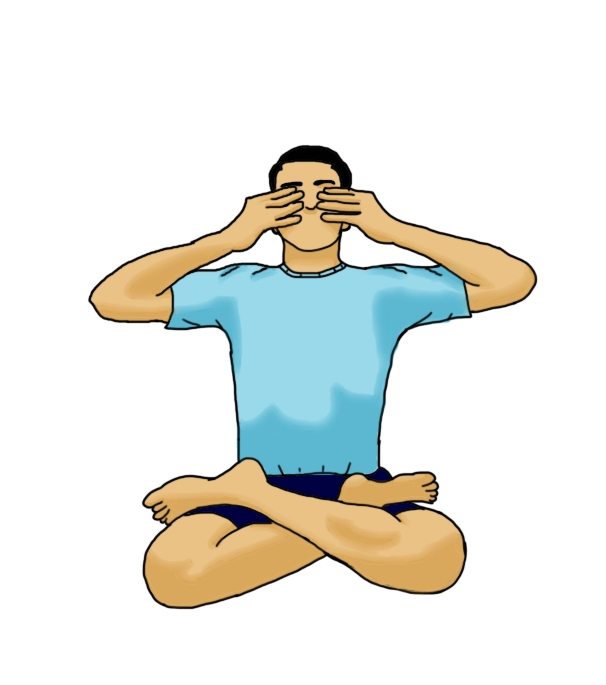
Benefits:
- The senses are turned inwards and the rhythmic breathing calms the mind’s wandering. This brings a feeling of inner peace.
- The posture prepares the practitioner for the fifth stage of yoga, Pratyahara, where he attempts to free himself from the thraldom of the senses and to prevent them from running after their desires.
2. Parvatasana
Parvata means a mountain. In this variation of Lotus Pose the arms are stretched over the head with the fingers interlocked.
Technique:
- Sit in Padmasana.
- Interlock the fingers, and stretch the hands vertically up over the head. Keep the head bent forward with the chin on the breastbone. The palms should face upwards.
- Hold the pose for a minute or two with deep and even breathing. Change the crossing of the legs and the interlock of the fingers and repeat the pose, keeping the back erect.
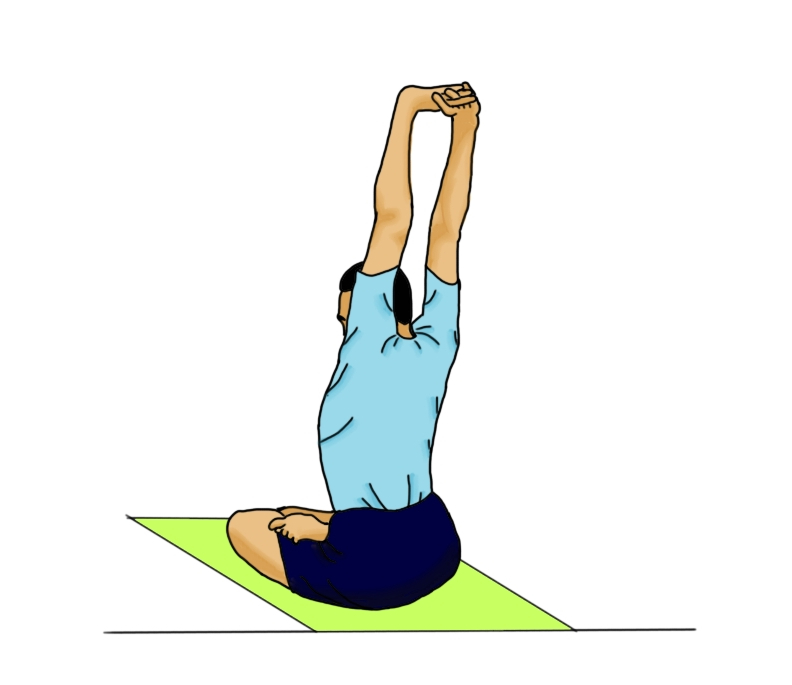
Benefits:
- The asana relieves rheumatic pains and stiffness in the shoulders.
- It helps free movement of the chest and to develop the chest.
- The abdominal organs are toned as they are drawn in.
3. Tolasana
Tola means a pair of scales. This pose resembles one pan of the scales, hence the name.
Technique:
- Sit in Padmasana.
- Inhale, Rest the palms on the floor beside the hips. Exhale, raise the trunk, and balance only on the hands, stretching out the arms.
- Rest on the floor, uncross the legs, re-cross them the other way, and again balance on the hands.
- Balance as long as possible.
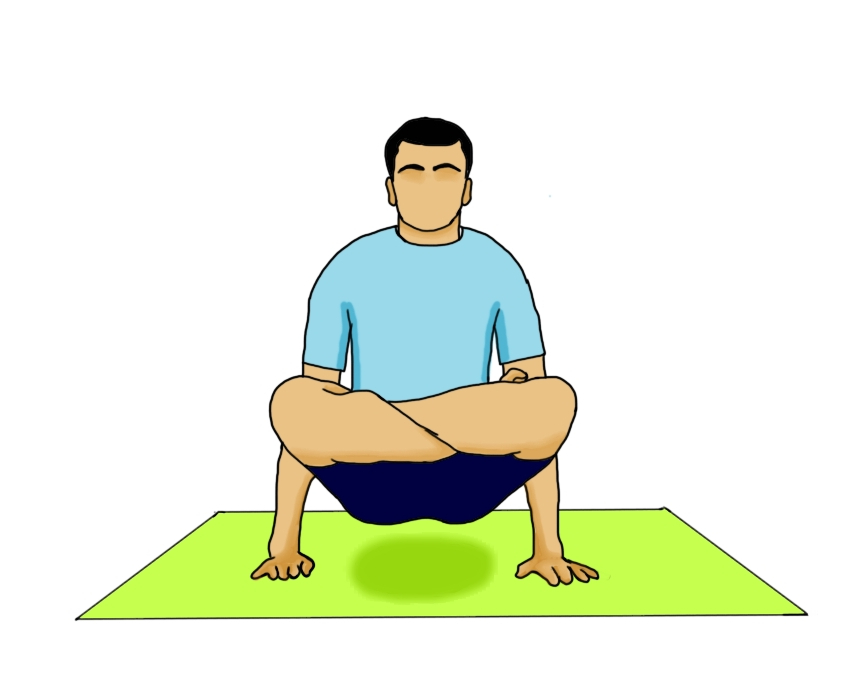
Benefits:
- This asana strengthens the wrists, hands, and abdominal walls.
4. Simhasana II
This is the variation of Simhasana (The original one does not include the Lotus Pose). Simha means a lion. This asana gives the strength like a lion.
Technique:
- Sit in Padmasana.
- Extend the arms in front and place the palms on the floor, fingers pointing forward.
- Stand on the knees and then push the pelvic region to the floor.
- Stretch the back by contracting the buttocks, keeping the arms fully stretched. The weight of the body rests on the palms and knees only.
- Open the mouth and stretch the tongue out towards the chin as far as you can.
- Gaze at the center of the eyebrows or the tip of the nose and keep the pose for about 30 seconds. Breathe through the mouth.
- Sit in Padmasana and lift your hands off the floor. Then interchange the position of the legs, perform Padmasana again, and repeat the pose for the same length of time.
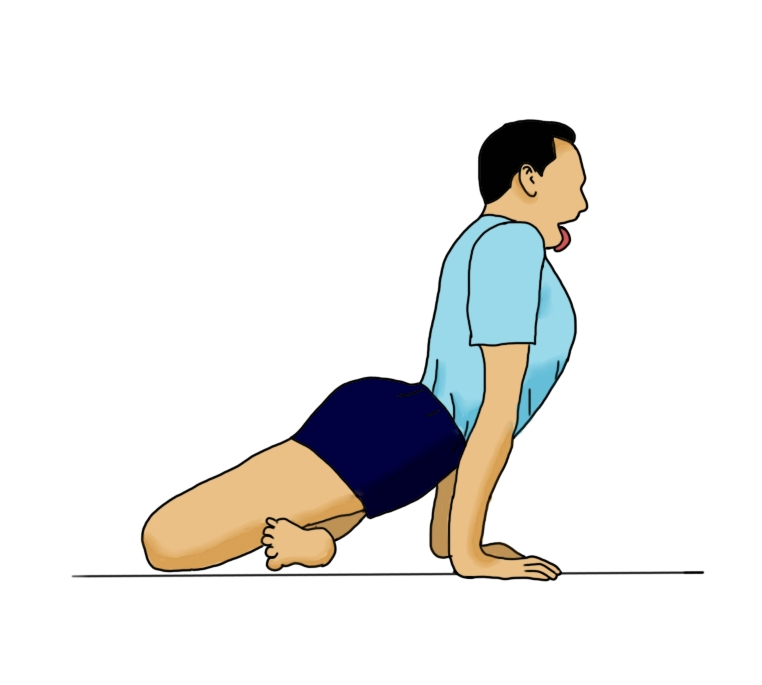
Benefits:
- The pose exercises the liver and controls the flow of bile.
- It cures foul breath, the tongue becomes cleaner and words are enunciated more clearly. It is, therefore, recommended to persons who stammer.
- The asana relieves a painful coccyx and helps to set it when displaced.
5. Matsyasana
Matsya means a fish. This posture is dedicated to Matsya the Fish Incarnation of Lord Vishnu, the source and maintainer of the universe and of all things.
Technique:
- Sit in Padmasana.
- Lie flat on the back with the legs on the floor.
- Exhale, arch the back by lifting the neck and the chest, take the head back, and rest the crown on the floor. Drag the head further back by holding the crossed legs with the hands and increase the back arch.
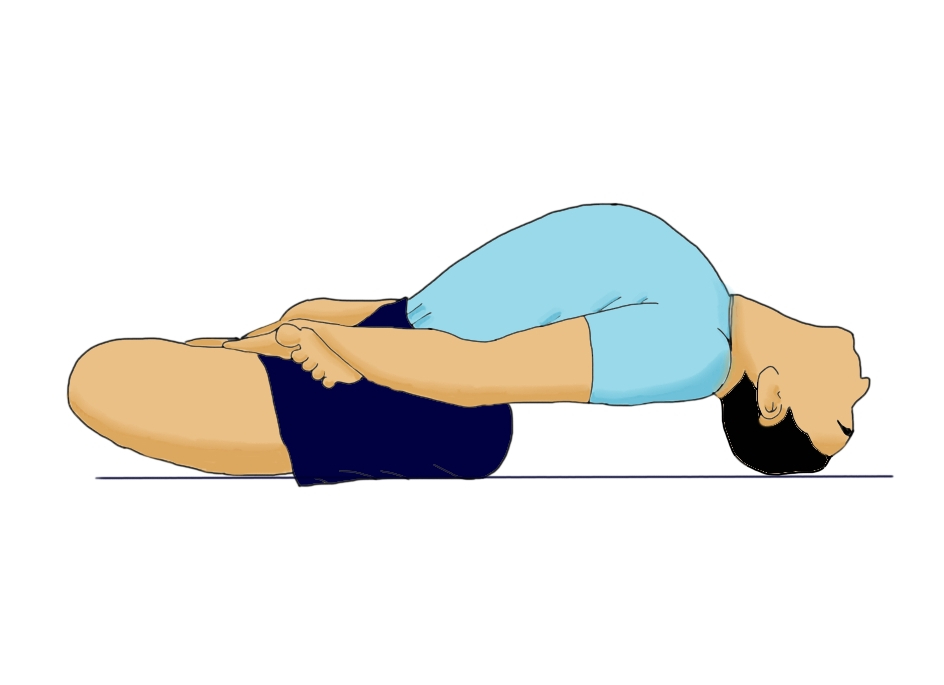
- Now take the hands from the legs, bend the arms, hold the elbows with the hands, and rest the forearms on the floor behind the head.
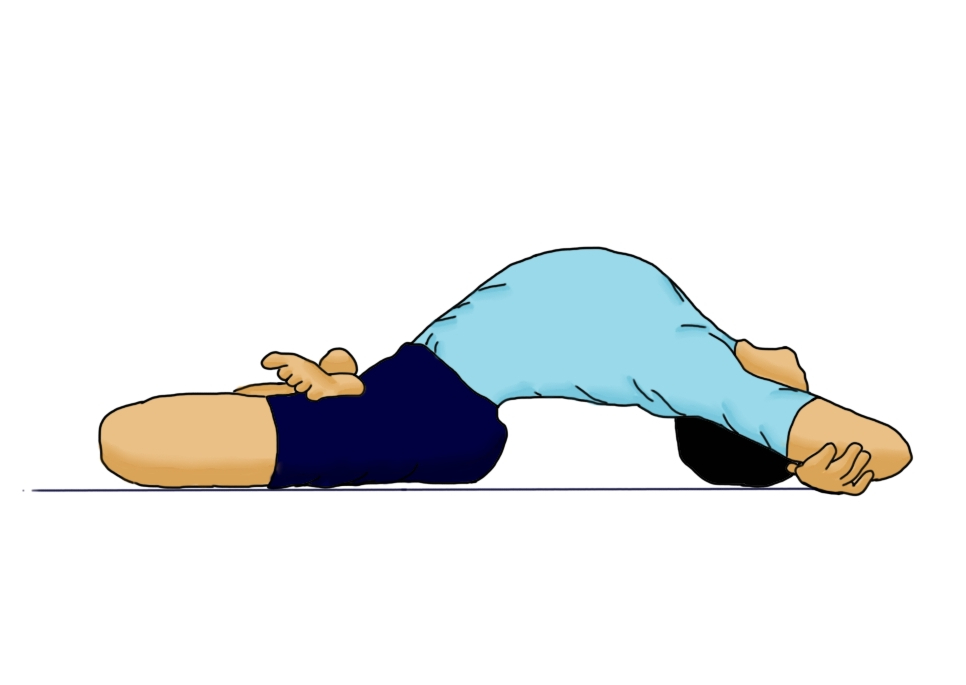
- Stay in this position from 30 to 60 seconds while breathing deeply.
- Rest the back of the head on the floor, lie fiat on the back, inhale, and then come up to Padmasana, release the legs, and relax.
- Recross the legs the other way and repeat the pose for the same length of time.
- If positions 3 and 4 are difficult to achieve, lie fiat on the back with the arms stretched straight over the head.
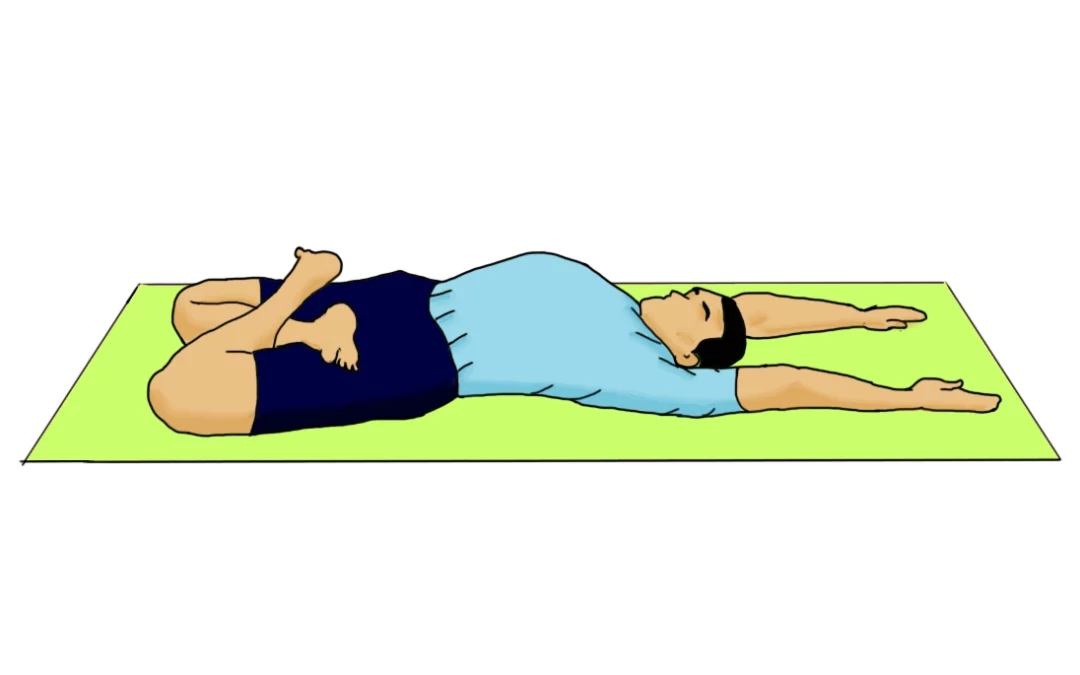
Benefits:
- The dorsal region is fully extended in this posture and the chest is well expanded as can be seen in the image. Breathing becomes fuller.
- The thyroids benefit from the exercise due to the stretching of the neck.
- The pelvic joints become elastic.
- The asana relieves inflamed and bleeding piles.
Conclusion:
Padmasana, even if practiced independently, has immense benefits for our mental and physical health. There’s no doubt, it was preferred by so many great sages and saints for their meditation. But when we practice Padmasana-based asanas, the benefits get multiplied. Padmasana-based asanas offer a gateway to tranquility and strength. Embrace these variations to deepen your practice and find balance within.
Stay connected with us for more valuable content. Also, visit the store to discover apparels that speak to your soul. Embrace your yoga journey with our unique designs. Wear your determination and spread positive vibes.